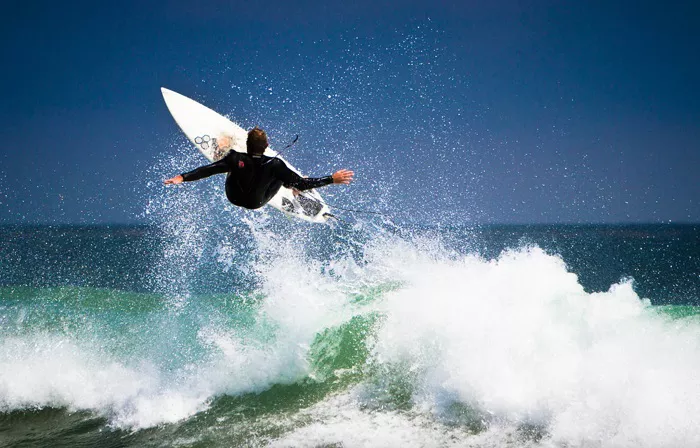Modern surfing, as we know it today, has its roots deeply embedded in the rich cultural traditions of ancient civilizations, particularly in the Pacific Islands. While the act of riding waves can be traced back thousands of years to various cultures around the world, the distinct practice of standing on a board to surf is most closely associated with Polynesian culture, especially in Hawaii. This article explores the origins of modern surfing, highlighting its historical development from ancient practices to its current global popularity.
The Ancient Origins of Surfing
Surfing’s history is complex and multifaceted, with evidence suggesting that wave riding began long before the modern surfboard was conceived. The earliest known instances of wave riding can be traced back to around 200 CE in Peru, where the Moche civilization utilized reed boats called Caballito de Totora for fishing and recreation.
These boats were designed to navigate the powerful waves of the Pacific Ocean and are considered one of the earliest forms of surfing.
In Polynesia, particularly in Hawaii, surfing evolved into a significant cultural practice. Historical accounts and archaeological findings indicate that surfing was not merely a recreational activity but a vital aspect of life for Polynesians. The Polynesians crafted wooden boards known as “olo” and “alaia,” which varied in size and shape depending on their intended use—be it for riding waves or for ceremonial purposes.
Cave paintings from as early as the 12th century depict figures riding waves on these wooden boards, suggesting that surfing was an integral part of Polynesian society long before European contact. The ocean was central to their way of life, providing food, transportation, and a means for spiritual connection with their gods.
The Cultural Significance of Surfing in Polynesia
For ancient Polynesians, surfing transcended mere sport; it was a spiritual journey. Surfing rituals included blessings for the wood used to craft surfboards and ceremonies that honored the ocean’s power.
These practices reflected a deep respect for nature and an understanding of its forces.
Surfing was also governed by social rules and customs. Certain spots were reserved for specific individuals or families, indicating that surfing was woven into the fabric of social hierarchy and community identity. The skill required to surf well was highly regarded, and mastery over this art form conferred status within the community.
As Polynesians navigated their vast oceanic territories, they developed techniques and styles that would influence future generations. When they brought these traditions to Hawaii in the 18th century, surfing began to take on new dimensions.
The Introduction of Surfing to Hawaii
Hawaii played a pivotal role in shaping modern surfing. When Polynesians settled in Hawaii around 1,500 years ago, they brought with them their cultural practices, including surfing. In Hawaii, surfing became known as he’e nalu, which translates to “wave sliding.” It quickly became a central part of Hawaiian culture and identity.
The first recorded European encounter with Hawaiian surfers occurred in 1778 when Captain James Cook arrived in the islands. His diaries provide one of the earliest descriptions of surfing as he witnessed Tahitian surfers riding waves on wooden planks. Cook’s observations highlighted not only the skill involved but also the joy and communal aspects of surfing.
As surfing grew in popularity among Hawaiians, it became more than just a pastime; it evolved into a sport with its own set of rules and competitions. The ancient Hawaiians established formal competitions where surfers would showcase their skills, further embedding surfing into their cultural practices.
Evolution And Spread of Surfing
In the late 19th century and early 20th century, surfing began to gain traction beyond Hawaii. The arrival of American missionaries and tourists introduced new materials and techniques for surfboard construction. Early surfboards were heavy and cumbersome; however, innovations led to lighter boards made from wood and later foam materials.
The establishment of organizations such as the Outrigger Canoe Club in 1908 marked a significant turning point in promoting surfing as a sport across different regions. This club aimed to foster interest in Hawaiian culture while encouraging participation in water sports.
The first surf schools emerged during this period, teaching newcomers how to ride waves while preserving traditional techniques. Notable figures like Duke Kahanamoku played an essential role in popularizing surfing globally by demonstrating his skills at exhibitions around the world. His contributions helped transform surfing into an internationally recognized sport.
Surfing’s Global Influence
By the mid-20th century, surfing had spread beyond Hawaii to California and other parts of the United States. The surf culture blossomed on the West Coast during this time, leading to a surge in popularity fueled by movies, music, and fashion associated with beach life.
The introduction of fiberglass surfboards revolutionized the sport by making boards lighter and more maneuverable. This innovation allowed surfers to perform tricks that were previously impossible on heavier wooden boards. As a result, competitive surfing began to take shape with organized contests showcasing these new skills.
Surfing continued to evolve through various subcultures that emerged worldwide. Each region adopted unique styles influenced by local conditions and traditions. For instance, big wave surfing developed on the North Shore of Oahu while shortboard riding gained popularity in California during the late 1960s.
Conclusion
Modern surfing is a remarkable blend of ancient traditions and contemporary innovations rooted primarily in Polynesian culture. From its origins with the Moche civilization’s reed boats to its evolution into a global sport characterized by diverse styles and techniques, surfing reflects humanity’s enduring connection with nature.
As we look back at its rich history—from spiritual rituals among ancient Polynesians to competitive events held worldwide—surfing stands as a testament to human creativity and resilience. It continues to inspire new generations while honoring its profound cultural heritage rooted deeply in oceanic traditions.
Related topics:
- The 10 Best Shields for Shield Surfing
- What Is The Biggest Surfing Competition in The World?
- 15 Reasons Why People like Surfing

